Book choices for today:
Mexico Michael Dahl
Culture of the World – Mexico Mary-Jo Reilly
Mexico Leslie Jermyn
Color Ruth Heller
Book of Colors: Meet the Color Family Margaret Brown
Is it Red? Is it Yellow? Is it Blue? Tana Hoban
Color Dance Ann Jonas
Geography: (first circle)
Need for lesson – North America Map, the book “Off We Go to Mexico”, or another book option on Mexico, some objects or pictures of things common to Mexico: a sombrero, maraca, pottery, rug, etc. and corn tortillas that have been warmed for a snack.
Geography 14
Let’s look our map of North America. This country is the United States. This country is Mexico. We are going to talk about Mexico today. Most people in Mexico speak Spanish. Do you remember some of the colors in Spanish?
Mexico has deserts, rain forest, mountains, and wetland areas. Mexico has a many different kinds of birds and reptiles. Common foods of Mexico are pineapples, mangoes, papaya, tortillas, enchiladas, burritos, chili peppers, avocados, and coffee. Corn tortillas are a very popular food. Corn is the most planted crop in Mexico. Corn kernels, or seeds, are ground up and then water and a few other ingredients like lime are added to the ground up corn. It gets all mixed up and then little round balls of dough are flattened and cooked to make tortillas. Another favorite food in Mexico is guacamole. It is made with avocados, tomatoes, onions, and cilantro. The ingredients get all mixed and mashed in what is called a molcajete, or mortar and pestle. Molcajetes are made out of stone and sometimes lava stone. (if you have one to show, bring it in and make it available on the Continent Table).
Mexico pottery is popular. The artist who make pottery use many bright colors. Even the traditional clothes of Mexico are often brightly colored. Let’s read about Mexico and look at some pictures in our book. If you would like a corn tortilla snack, you can have one to eat during the story.
Read Off “We Go to Mexico” and talk about any objects or pictures you may have.
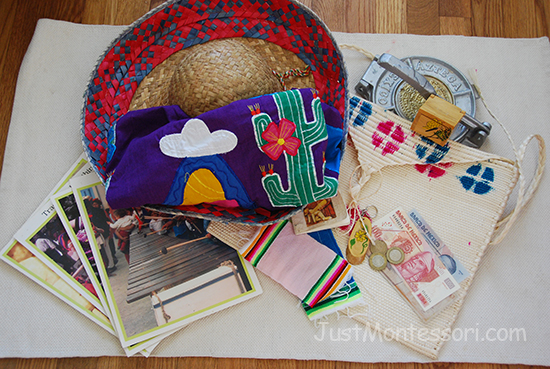
Additional Works:
Mortar and Pestle – Explain to the children that this is another type of mortar and pestle. We are going to use this like they do in Mexico to make guacamole. We are going to grind up egg shells into small pieces. At another time we will be using all of our crushed eggshells for art. (I soak and wash eggshells in hot soapy water with a little bleach and then rub the inside well to clean the shells really good).

Practical Life:
Pouring – I just wanted to show you these simple cups for pouring. They have some pictures of a sombrero, cactus, maraca, etc. They are from a Dollar Store and so for two dollars you can have something to go with Mexico!
Spooning – These bowls have a chili pepper inside and are nice bright colors. They come from a craft store. I colored some rice orange to use for this spooning work.
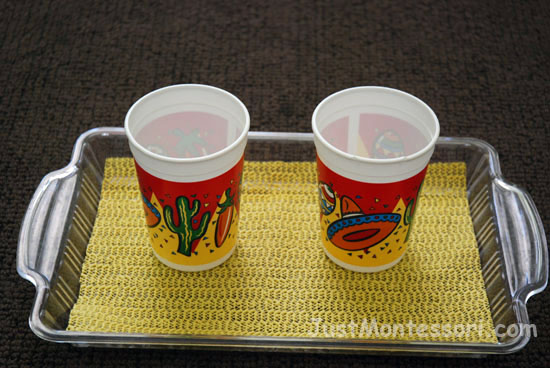

Art:
Water Bottle Maracas – Water bottles – one for each child, tissue paper cut up into pieces. watered down glue, paint brush, and dry pinto beans. Children can put some beans into their bottle and tightly put lids back on. Children paint an area on the bottle with the glue and add tissue paper pieces onto the glue. Continue painting with glue and adding tissue paper until bottle is covered. Let dry before shaking!
Coloring Pages – Rainbowkids.com has a variety of coloring pages of Mexico clothes, food, instruments, etc.
Science: (second circle)
Need for lesson – The book “How a Book is Made”, coffee filters (cut into strips), markers: orange, green, purple, black, shallow containers, and water. Test the markers before the lesson to be sure they are a kind that will separate colors.
Science 20
Yesterday when we talked about colors we learned about two kinds of colors. What kind of colors are red, blue, and yellow? What do we call orange, purple, and green? Let’s read a story about these colors. This book also helps us to learn about how a book is made.
Read the book “How a Book is Made”
We have a color mixing work on the shelves. We take primary colors, mix them together and make new secondary colors. Let’s now try to do the opposite. We are going to take the secondary colors and see if we can separate the colors that make them up. We have coffee filter pieces of paper. Choose the color you would like to start with. Using your marker, just color one end of the coffee filter paper. Now we are going to only dip the colored end of the coffee filter in this dish of water and see what happens.
Children can experiment with the colors and see which one works best or not at all.
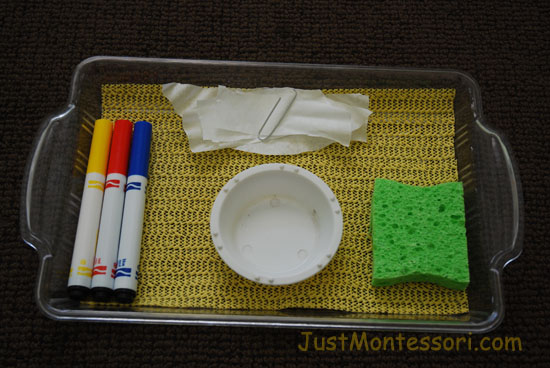
Additional Work:
Color Wheel – Talk about the Color Wheel (montessoriprintshop.com). Children can color a wheel to take home.
Color Mixing Art – Using shaving cream, children add drops of primarty colors, stir, and lay a piece of paper over the colored shaving cream, squeegee off excess. Allow design paintings dry.
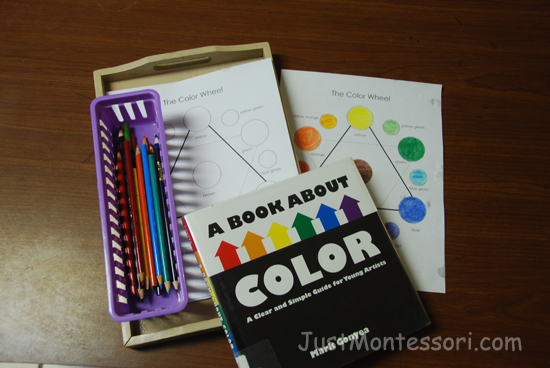
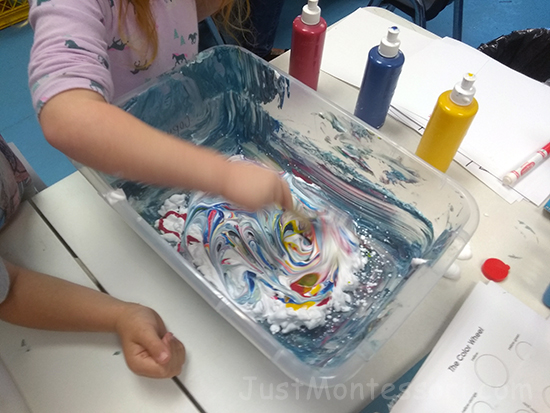
Song (CD) choices for today:
Colors Hap Palmer
Colors Frank Leto
Parade of Colors Hap Palmer
Tocan Las Maracas Rhythm of the Rocks
Buenos Dias Amigos Look at My World
Monedita de Oro (Mexico) Kids World Party
Mexican Song Ella jenkins
Buy Weeks 6-10 PDF
-
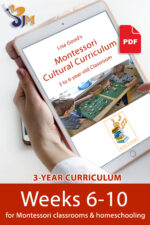 (C) Weeks 6-10$25.00
(C) Weeks 6-10$25.00


